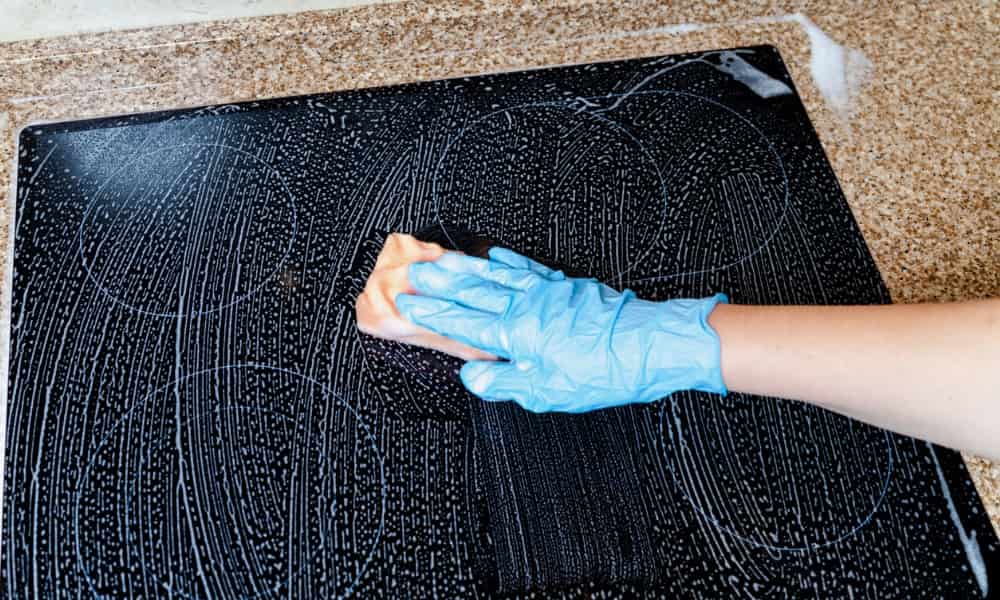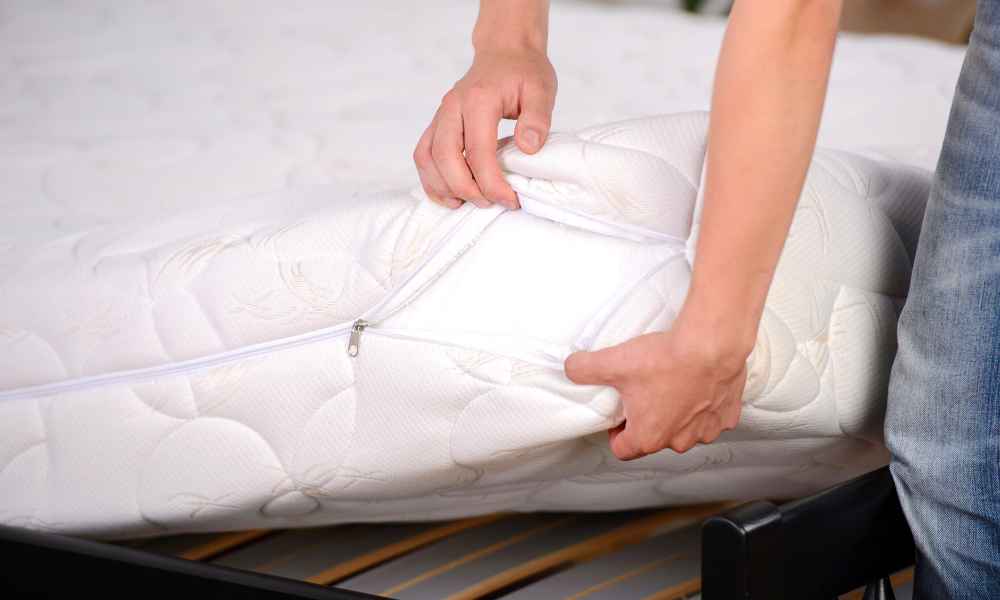Keeping your kitchen mat clean is essential for maintaining a hygienic and visually appealing kitchen space. With the everyday spills, stains, and foot traffic, It’s important to know the right techniques to effectively clean your kitchen mat. Whether it’s a rubber, vinyl, Or fabric mat, regular cleaning will not only remove dirt and grime but also help prolong its lifespan. By following a few simple steps, you can ensure a clean and fresh kitchen mat that adds both functionality and style to your culinary sanctuary.
Can You Wash Kitchen Mat?
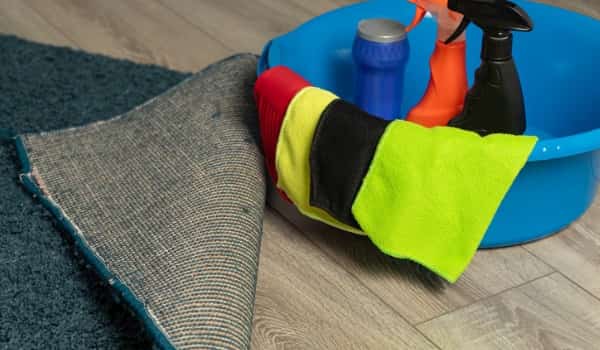
Yes, you can wash kitchen mats, depending on the type of mat and its cleaning instructions. Many kitchen mats, such as rubber, vinyl, or fabric mats, can be washed either by hand or in A washing Machine.
However, it’s important to check the manufacturer’s guidelines or care instructions specific to your kitchen mat to ensure proper cleaning methods. Some mats may require gentle washing with mild detergent and water, while others may be machine washable on a gentle cycle.
Always follow the recommended cleaning instructions to preserve the quality and longevity of your kitchen mat.
How Often Should You Clean Kitchen Mats?
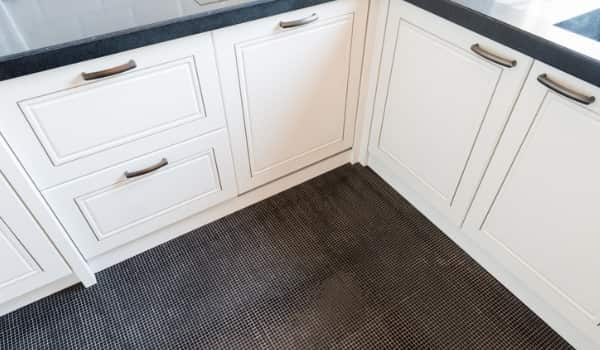
Kitchen mats should be cleaned regularly to maintain hygiene and prolong their lifespan. The frequency of cleaning will depend on the level of usage and the type of dirt and spills they encounter.
As A general guideline, it is recommended to clean kitchen mats at least once a week in a typical household. However, in busy kitchens or areas prone to spills and stains, more frequent cleaning may be necessary. Promptly clean up any spills or stains as they occur to prevent them from setting in.
Regular vacuuming or sweeping to remove loose debris is also recommended. It’s important to refer to the manufacturer’s instructions for specific guidance on cleaning intervals and methods for your particular kitchens mat. By establishing A regular cleaning routine, you can ensure a clean and sanitary environment in your kitchen.
Is It Safe To Wash The Kitchen Mats?
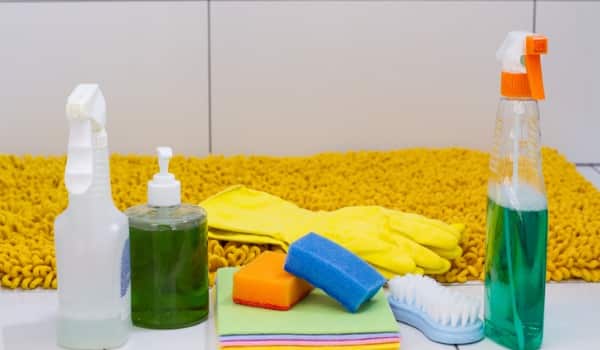
Yes, it is generally safe to wash kitchen mats, As long as you follow the manufacturer’s guidelines and use appropriate cleaning methods. Most kitchen mats are designed to withstand washing, whether it’s by hand or in a washing machine. However, it’s important to check the care instructions specific to your kitchens mat to ensure that washing is recommended and to understand any precautions or limitations.
Some mats may require gentle washing with mild detergent and water, while others may have specific temperature or cycle requirements for machine washing. By following the recommended cleaning instructions, You can safely wash your kitchen mats and maintain A clean and hygienic environment in your kitchen.
Know About The Type Of Kitchen Mats
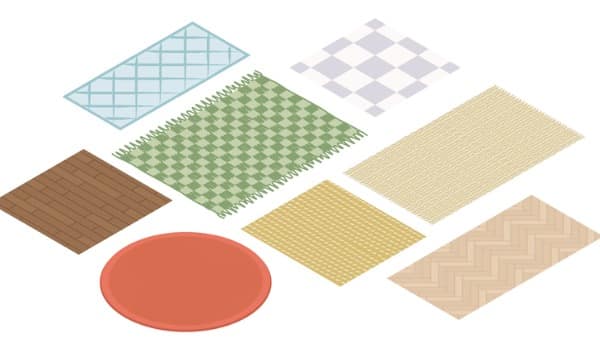
There are several types of kitchen mats available, Each with its unique features and benefits. Common types include rubber mats, which offer durability and slip resistance, making them ideal for high-traffic areas.
Gel mats provide cushioning and support, relieving fatigue during prolonged standing. Foam mats are lightweight and comfortable, making them suitable for areas where anti-fatigue properties are desired.
Anti-slip mats have textured surfaces for enhanced grip and safety. Additionally, there are fabric or cotton mats that provide a softer feel and can be machine washed. The choice of kitchens mats depends on factors like functionality, comfort, durability, and personal preferences.
Cleaning Pattern For Anti-Fatigue Kitchen Mats
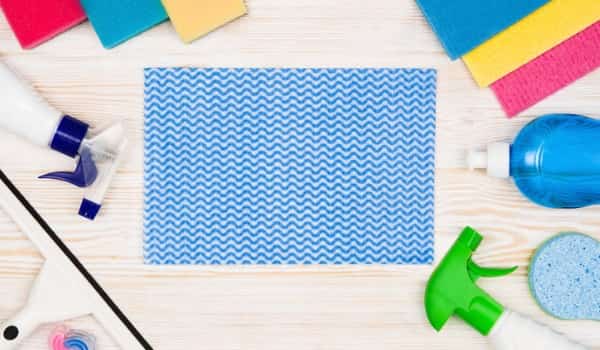
When cleaning anti-fatigue kitchen mats, it is best to start by removing loose debris through shaking or using a broom. Next, spot clean any spills or stains using a mild detergent or cleaner suitable for the mat’s material.
For A more thorough cleaning, prepare a solution of mild detergent and warm water, and gently scrub the mat with a soft brush or sponge.
Rinse the mat with clean water and allow it to air dry completely before placing it back in the kitchen. Following this pattern will help maintain the cleanliness and hygiene of your anti-fatigue kitchen mats.
Cleaning Pattern For Rubber Kitchen Mats
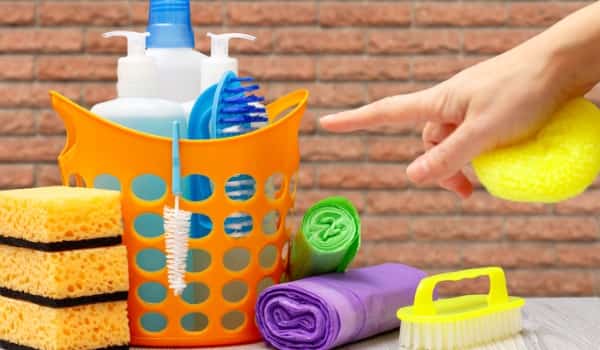
When cleaning rubber kitchen mats, you can follow this pattern: Start by removing loose dirt and debris by shaking or using a broom. Next, Prepare a cleaning solution of warm water and a mild Detergent.
Using a soft brush or sponge, scrub the rubber mat with the cleaning solution, paying attention to any stained or soiled areas. Rinse the mat thoroughly with clean water to remove any soap residue.
Finally, allow the mat to air dry completely before placing it back in the kitchen. Regularly following this cleaning pattern will help keep your rubber kitchen mats clean and in good condition.
Assess the type of kitchen mat
Different types of kitchen mats (rubber, vinyl, gel, etc.)
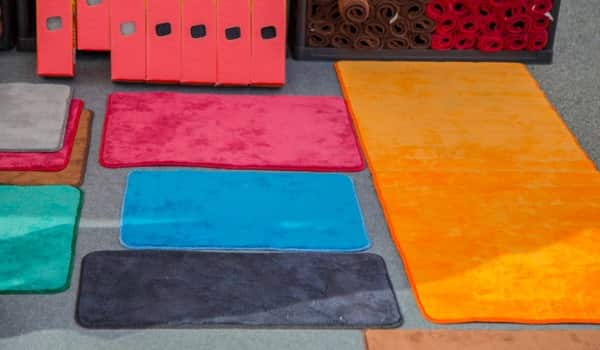
There are various types of kitchen mats available, Including rubber mats, vinyl mats, gel mats, foam mats, And fabric mats. Each type has its unique properties, Such as durability, slip resistance, anti-fatigue properties, And ease of cleaning.
Understanding the manufacturer’s cleaning recommendations

Understanding the manufacturer’s cleaning recommendations: It is crucial to review the cleaning recommendations provided by the manufacturer for your specific kitchen mat. Different materials and construction methods may have specific care instructions to ensure proper cleaning and maintenance.
These recommendations will guide you on the appropriate cleaning products, techniques, and any limitations or precautions to follow.
Regular maintenance and preventative measures
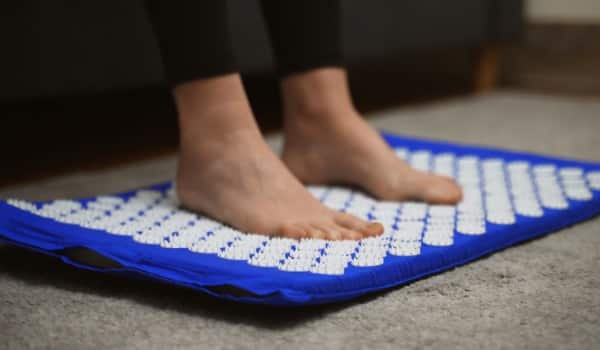
Shake off loose debris and dirt
Start by taking the mats outside and giving it A vigorous shake to dislodge any loose dirt, crumbs, or debris that may have accumulated On the surface. Alternatively, you can hang the mat over a railing and beat it gently with a broom or use a soft brush to sweep away the debris.
Use a broom or vacuum cleaner for regular cleaning
For regular maintenance, use a broom with soft bristles or a vacuum cleaner with a brush attachment to sweep or vacuum the mat. This will help remove any remaining dirt, Dust, or smaller particles that may have settled On the surface or in crevices.
Place a doormat outside the kitchen entrance to minimize dirt and moisture
Positioning a doormat outside the entrance to your kitchen can greatly reduce the amount of dirt, moisture, and debris tracked inside. Choose a doormat with a textured surface or bristles to effectively scrape off dirt from shoes. This preventative measure will minimize the transfer of dirt onto the kitchen mat, making it easier to clean and maintain.
Cleaning methods for different types of kitchen mats
When cleaning different types of kitchen mats, it’s important to follow specific cleaning methods for each material. For rubber mats, sweep or vacuum to remove debris, then clean with warm soapy water. Vinyl mats can be wiped and cleaned with a mild detergent solution.
Gel mats require gentle cleaning with a mild soap and water solution. Fabric or cotton mats can usually be machine washed on a gentle cycle. Always check the manufacturer’s instructions for the recommended cleaning methods to ensure effective and safe cleaning for your specific kitchen mat.
Rubber kitchen mats

1. Sweep or vacuum the surface
Start by removing loose dirt, crumbs, or debris from the rubber kitchen mat using a broom or vacuum cleaner. This will help eliminate larger particles and make the cleaning process more effective.
2. Clean with warm soapy water
Prepare a solution of warm water and mild dish soap or a gentle detergent. Dip a soft brush or sponge into the soapy water and scrub the surface of the rubber mat in circular motions. Pay extra attention to any areas with stubborn stains or dirt buildup.
3. Rinse thoroughly and allow to air dry
After scrubbing, rinse the rubber kitchen mat thoroughly with clean water to remove any soap residue. Ensure that all the soap is washed off to prevent a slippery surface. Once rinsed, Leave the mat in A well-ventilated area to air dry completely before placing it back in the kitchen.
Vinyl or PVC kitchen mats
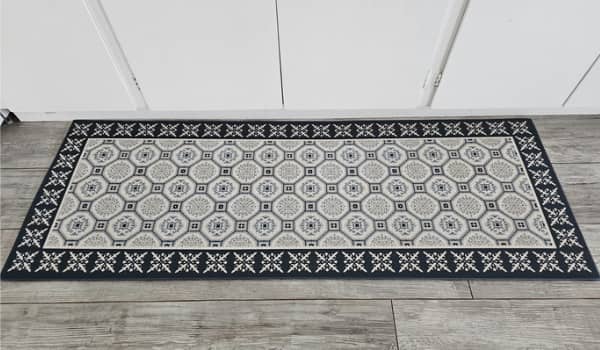
1. Remove loose dirt and debris
Before cleaning, remove any loose dirt, Crumbs, Or debris from the mat’s surface. You can use a broom, vacuum cleaner, or simply shake the mat outside to get rid of the larger particles.
2. Use a mixture of mild detergent and water for cleaning
In a bucket or basin, mix a mild detergent or a gentle all-purpose cleaner with warm water. Avoid using harsh chemicals that can damage the vinyl or PVC material. Refer to the manufacturer’s instructions or labels for any specific cleaner recommendations.
3. Scrub with a soft brush or sponge
Dip a soft-bristle brush or sponge into the soapy solution. Gently scrub the mat’s surface in circular motions, paying extra attention to any stains, spills, or high-traffic areas. Avoid using abrasive scrub brushes or scouring pads, as they can scratch or damage the mat.
4. Rinse with clean water and allow to air dry
After scrubbing, rinse the mat thoroughly with clean water to remove any soap residue. Ensure that all the soap is rinsed off to prevent any slippery residue. Once rinsed, Shake off any excess water and hang the mat or lay it flat in A well-ventilated area to air dry completely.
Gel kitchen mats
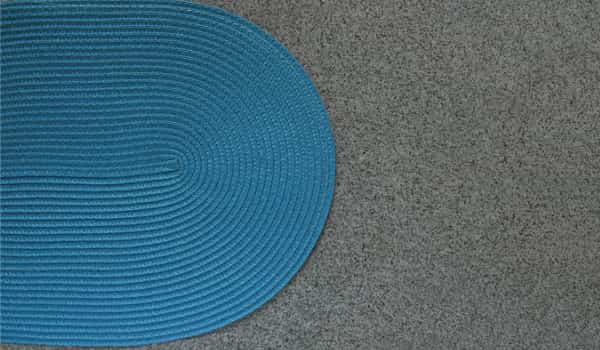
1. Wipe off spills and stains immediately
As soon as you notice any spills or stains on the gel kitchen mat, promptly wipe them off using a clean cloth or paper towel. This will prevent the spills from setting and making the cleaning process more difficult.
2. Use a mild soap and water solution for cleaning
Prepare a solution of warm water and a mild soap or gentle detergent. Avoid using harsh chemicals or abrasive cleaners that can damage the gel material. Mix the solution until the soap is well-dissolved.
3. Gently scrub the surface with a soft cloth or sponge
Dip a soft cloth or sponge into the soapy solution and gently scrub the surface of the gel kitchen mat. Focus on any stained or soiled areas, using light pressure to avoid damaging the gel material. Ensure that you cover the entire surface of the mat.
4. Rinse with clean water and allow to air dry
Thoroughly rinse the gel kitchen mat with clean water to remove any soap residue. Ensure that all the soap is rinsed off to prevent any slippery residue. After rinsing, Gently squeeze out any excess water and allow the mat to air dry completely in A well-ventilated area.
Dealing with stubborn stains and odors
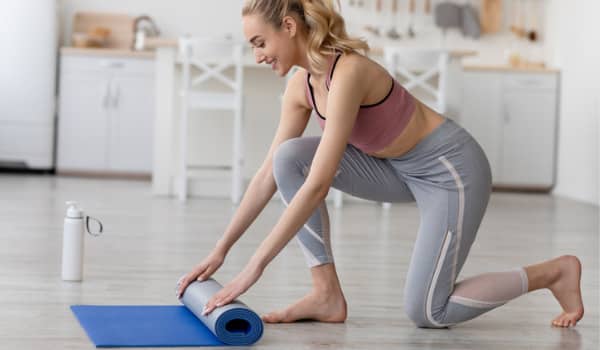
When dealing with stubborn stains and odors on kitchen mats, there are a few effective methods to try. For stubborn grease Or oil stains, start by absorbing the excess with a paper towel, then apply A mixture of baking soda and water, gently scrubbing the area before rinsing with clean water. For food or beverage stains, blot the stain with A clean cloth and apply a mixture of mild detergent and water, Gently scrubbing the area and rinsing thoroughly. To eliminate odors, sprinkle baking soda over the mat’s surface, Let it sit for a few hours or overnight to absorb the odor, then vacuum Or sweep off the baking soda. These methods can help remove stubborn stains and odors, leaving your kitchen mats clean and fresh.
Grease or oil stains
1. Absorb excess grease with a paper towel
Immediately after the spill occurs, use a paper towel to gently blot and absorb as much of the excess grease or oil as possible. Avoid rubbing the stain, as it can spread the grease further.
2. Apply a mixture of baking soda and water
Create A paste by mixing baking soda with A small amount of water. The paste should have a thick consistency. Apply the paste directly to the grease or oil stain, covering it completely. Allow the paste to sit On the stain for about 15-20 minutes.
3. Scrub gently and rinse thoroughly
After the paste has had time to work on the stain, use a soft brush or sponge to gently scrub the affected area. Scrub in circular motions, applying light pressure. Rinse the area with clean water to remove the baking soda paste and any remaining grease or oil residue. Ensure that you rinse thoroughly to avoid leaving any residue behind.
Food or beverage stains
1. Blot the stain with a clean cloth or paper towel
Immediately after the spill occurs, gently blot the stain using a clean cloth or paper towel. Blotting helps absorb as much of the liquid as possible and prevents the stain from spreading further.
2. Apply a mixture of mild detergent and water
Create a solution by mixing mild detergent or dish soap with water. Dip a clean cloth or sponge into the solution and apply it to the stained area. Gently work the solution into the stain, using circular motions.
3. Scrub gently and rinse with clean water
Use a soft brush or sponge to gently scrub the stain, applying light pressure. Continue scrubbing until the stain starts to lift. Then, rinse the area with clean water to remove the detergent solution and any remaining residue.
Removing odors
1. Sprinkle baking soda over the mat surface
Generously sprinkle baking soda over the entire surface of the mat, ensuring even coverage. Baking soda is known for its odor-absorbing properties and will help neutralize unwanted smells.
2. Let it sit for a few hours or overnight
Allow the baking soda to sit On the mat for a few hours or overnight. This will give it enough time to absorb the odors effectively. If possible, Leave the mat in a well-ventilated area while the baking soda works Its magic.
3. Vacuum or sweep off the baking soda
After the designated time has passed, use a vacuum cleaner with a brush attachment or a broom to remove the baking soda from the mat. Ensure that you thoroughly remove all traces of baking soda.
Drying and maintenance tips
Allow the mat to air dry completely before placing it back in the kitchen
After cleaning or if the mat becomes wet, allow it to air dry completely before returning it to its designated spot in the kitchen. This helps prevent moisture buildup, Which can lead to mold, mildew, Or unpleasant odors.
Avoid folding or storing a wet mat
It’s crucial to avoid folding or storing a kitchen mat while it is still wet. This can trap moisture within the folds and potentially damage the mat or create an environment conducive to mold growth. Instead, ensure the mat is completely dry before storing it.
Regularly inspect the mat for any signs of damage or wear
Routinely examine the mat for any signs of damage, such as tears, fraying edges, or significant wear. Address any issues promptly to prevent further damage or potential tripping hazards. Depending on the material and usage, It may be necessary to replace the mat if it becomes excessively worn Or damaged.
Additional tips for long-term maintenance
To ensure the long-term maintenance of your mat, there are several additional tips to follow. Regularly rotate the mat to promote even wear and prevent excessive traffic on certain areas. Avoid using harsh chemicals or abrasive cleaners that can damage the mat’s material or finish. Always adhere to the manufacturer’s instructions for specific care guidelines, as they provide valuable insights into the best cleaning methods and products to use. Additionally, make it a habit to vacuum or sweep the mat regularly to remove dirt and debris, clean spills promptly using mild detergents, and protect the mat from direct sunlight and heavy furniture. By implementing these practices, you can extend the lifespan of your mat and keep it in optimal condition for years to come.
Importance of cleaning kitchen mats
Regular cleaning of kitchen mats is crucial for maintaining a clean and safe food preparation environment. Kitchen mats act as a barrier between the floor and the kitchen staff, helping to prevent slips, falls, and fatigue. However, over time, these mats accumulate dirt, grease, food particles, and moisture, becoming breeding grounds for bacteria and potential health hazards. By consistently cleaning kitchen mats, Not only do we remove these contaminants, but we also minimize the risk of cross-contamination, Maintain hygiene standards, and ensure the overall cleanliness And safety of the kitchen area.
Benefits of a clean and hygienic kitchen mat
A clean and hygienic kitchen mat provides numerous benefits, including improved safety, reduced risk of contamination, and enhanced cleanliness standards. By keeping the kitchen mat clean, we create a safer environment by minimizing the chances of slips and falls due to accumulated dirt or moisture. Additionally, Regular cleaning helps to prevent the growth of bacteria, Mold, and mildew, reducing the risk of cross-contamination and maintaining a hygienic food preparation area. Furthermore, a clean kitchen mat contributes to overall cleanliness standards, enhancing the aesthetics of the kitchen and promoting a professional image.
The Final Thought
Keeping your kitchen mat clean is essential for maintaining A hygienic and safe cooking environment. By following these simple steps, You can easily remove dirt, Stains, And odors from your mat. Regular cleaning will not only prolong the lifespan of your mat but also ensure that it remains slip-resistant and comfortable to stand on. Remember to clean your mat At least once A week and give it a deep clean every few months. So, don’t neglect this important task – take care of your kitchen mat today and enjoy a cleaner and healthier cooking experience!
